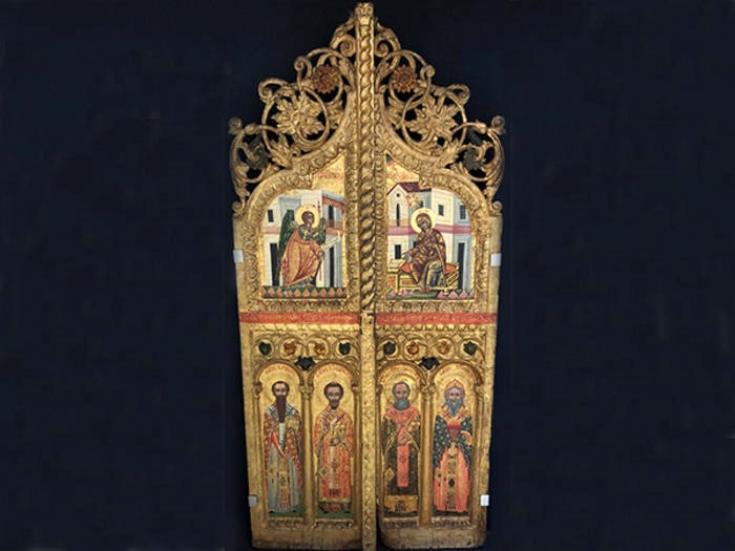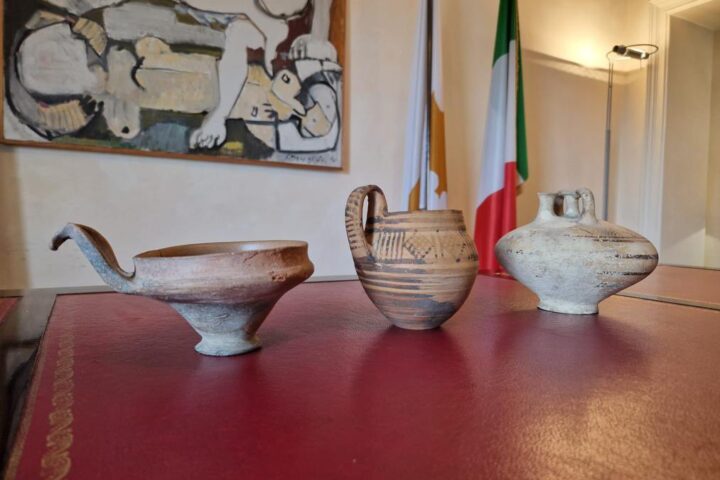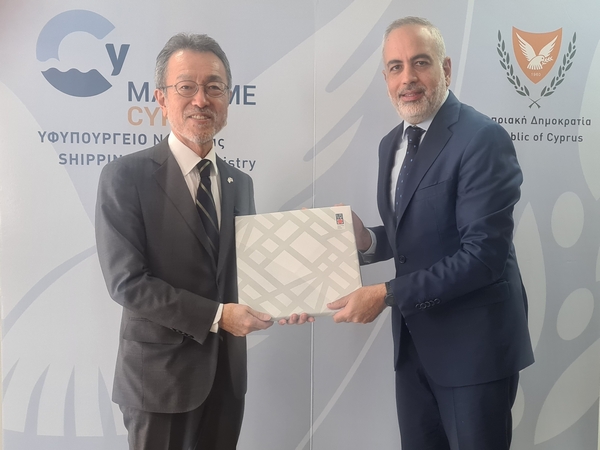The stolen Royal iconostasis doors of Ayios Anastasios church in the Turkish-occupied Peristeronopigi village of Famagusta have been repatriated from Japan after a complex legal struggle.
According to the Department of Antiquities, the Royal iconostasis doors have returned to Cyprus after efforts intensified during the last two years, thus concluding one of the most renowned and complex repatriation cases.
The Department of Antiquities will preserve the Royal iconostasis doors.
However, they will be handed over to the Cyprus Church until their return to Ayios Anastasios, where they belong, is made possible.
“The looting of Ayios Anastasios by the Turkish occupation army and its collaborators and the sale of the Royal iconostasis doors, icons and sacred vessels of the church, the fate of which remains unknown, reveals the catastrophic consequences of the Turkish invasion on the cultural heritage of Cyprus,” the Department of Antiquities said in a statement.
The doors were located in Japan in the 1990s at the Kanazawa College of Art.
Their repatriation was made possible following the coordinated efforts of the Department of Antiquities, the Cyprus Embassy in Tokyo and the Church of Cyprus, together with the competent authorities of the Kanazawa College of Art that possessed the Royal iconostasis doors.
The Royal iconostasis doors belong to the Cypriot iconographic tradition of the 18th century, which is differentiated from the rest of the Orthodox world, of which they are an important example.
During this period, the upper part of iconostasis doors was usually decorated with representations of the Annunciation, while the lower parts were often decorated with representations of the Three Hierarchs and occasionally, with a Cypriot saint, Ayios Spyridonas in this case.
Apart from their archaeological importance, Royal iconostasis doors bear important symbolical and religious meanings since they are an integral part of Orthodox churches.
The repatriated doors from Peristeropigi date to 1778, according to an inscription preserved on the artefact.
According to the inscription, the doors were painted by the Monk Filaretos from Psimolofou.
The doors were made at the expense of Hatzigiasoumis, probably a resident of Peristeronopigi village, when Chrysanthos was Archbishop and Leontios was Abbot.
“The Department of Antiquities that protects and manages the cultural heritage of Cyprus underlines that it will continue efforts for its preservation.
“Although it is acknowledged the fight against illicit trafficking is an extremely difficult and complex issue, the Department of Antiquities is confident that the desired results can be reached through coordinated efforts.”










